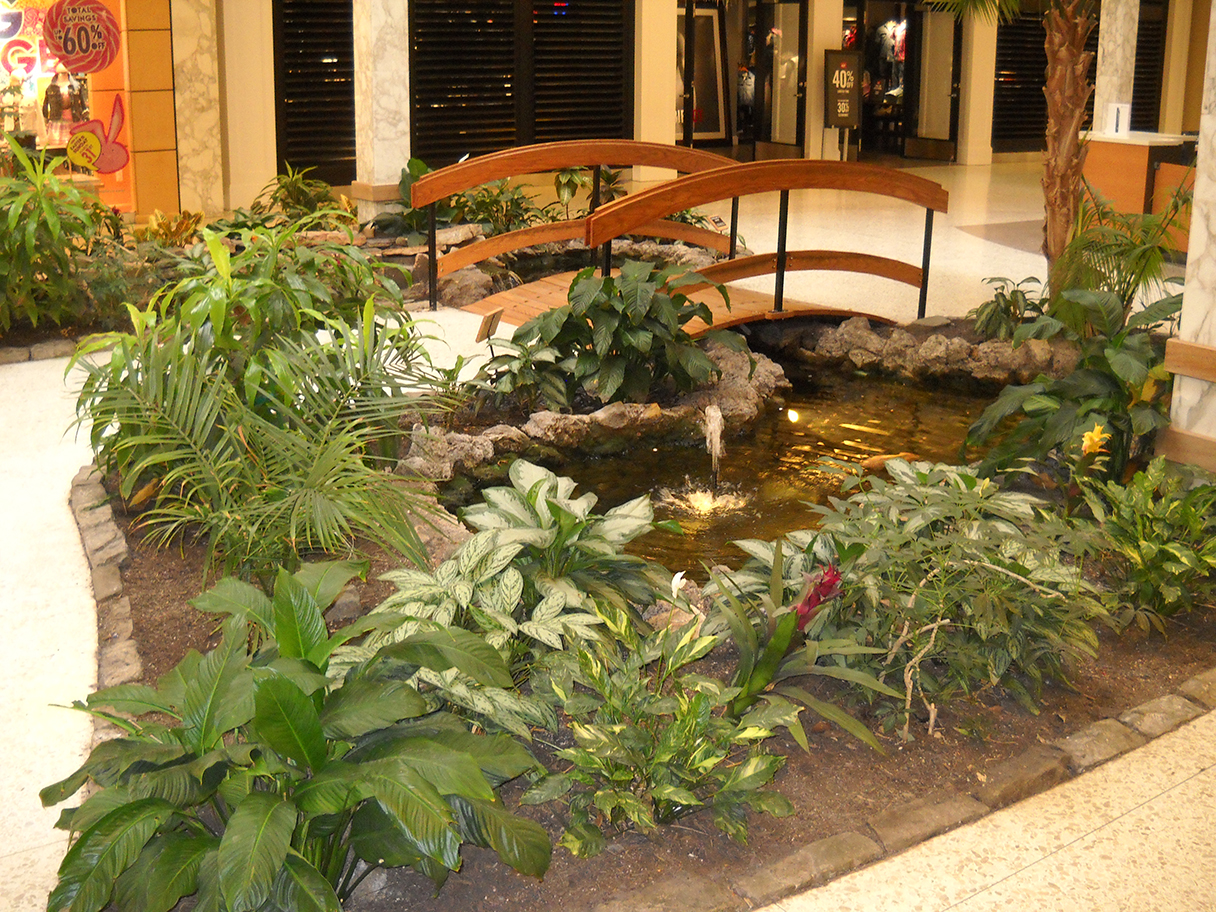
The Monroeville Mall Bridge Enters the Heinz History Center Collection
The Monroeville Mall footbridge holds a special place in the hearts of George A. Romero fans. Of the many Romero sites and props that remain in Southwestern Pa., the bridge is sacred.
The bridge, now iconic to many, is featured in Romero’s most commercially successful zombie film, 1978’s “Dawn of the Dead,” set in Monroeville Mall about 14 miles from downtown Pittsburgh. [1] Surrounded by a koi pond and some plants, the bridge appears at several points in the film as a set piece for lurching zombies, mostly for comedic effect. In one scene, a crazed biker attempts to ride his hog over it, only to be pulled down and claimed as a victim by the living dead.
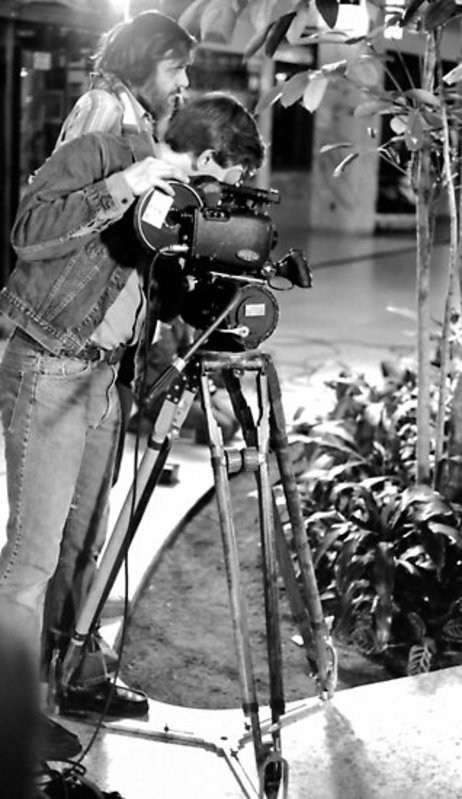
The footbridge became the center of nationwide social media buzz in 2015. It was targeted for rescue by a handful of local historians and mega fans. Writing to the Senator John Heinz History Center, Romero fan William Sanders explained that the mall was set for renovation and redesign. As part of the remodeling process, the bridge would be removed in favor of better and more up-to-date accouterments.
History Center curators saw the value of collecting this artifact as part of their mission to honor and promote Pittsburgh’s cultural heritage. Museum staff also saw its potential for future exhibitions and programs exploring Pittsburgh’s history as “the Hollywood of the East” or “the Hollywood on the Mon.” Through a partnership with mall owner CBL and Associates Properties of Tennessee, the bridge was donated and safely conveyed by a procession of Romero fans dressed as zombies to the History Center’s permanent collection in July 2015.
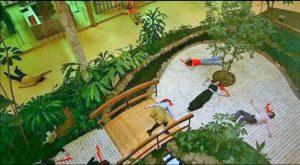
The “Zombie Bridge” as it appears in George A. Romero’s 1978 “Dawn of the Dead.”
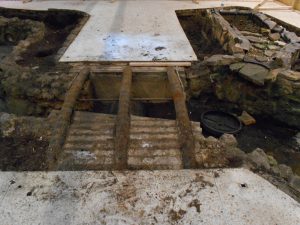
The removal of the bridge was successful, but certain elements were not transferred, such as the plants, stones, and cement portions surrounding the base.
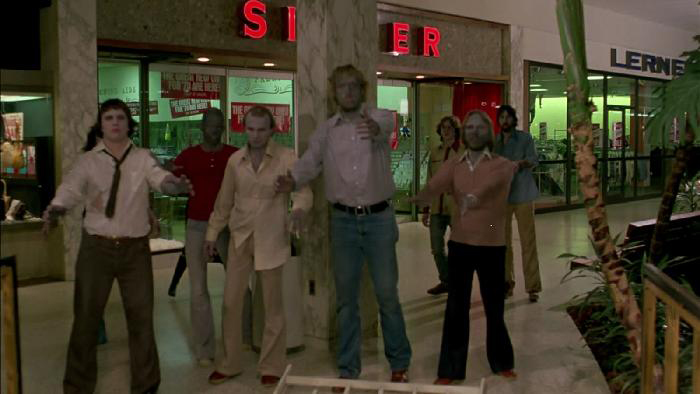
The bridge and its increasing cachet around the world testify to the ways in which Romero fans have been proactive in efforts to preserve and lionize pieces from his films, elevating them into cinematic history. Before this latest preservation effort, the Evans City cemetery that was the site of Romero’s first zombie film, “Night of the Living Dead,” was designated as a tourist destination. More recently, a bust of Romero was installed in Monroeville Mall, signaling the fans’ redesignation of the space as a “mecca” for paying tribute to his films even as it undergoes changes.
The bridge’s rescue highlights the very real differences that can exist between creators and fans. Based on interviews, Romero indicated that he was ambivalent about the role of the shopping mall in the wider culture. He viewed the shopping mall as an engine of mindless consumerism. And certainly, many have attributed this anti-capitalist message to the film.

But there’s more to the story. In his reflections on making the film, Romero spoke warmly of the local people who acted as extras and added their charm and uniqueness to the shopping mall. He was astonished and gratified by the masses of extras who lined up around the mall and waited hours into the night for a chance to be captured on film, performing the “zomb” look (Romero’s term for zombie). Of the extras, Romero remarked: “It was something to do – instead of going to a midnight showing of “Rocky Horror,” they’d come to the mall and be zombies!” [2]
For legal reasons, the “Dawn of the Dead” script did not specify what zombies looked like. Rather, it was the local performers who made the zombies all their own. How the extras dressed for the film shoot would determine their appearance in the final product.
Some zombies were pre-planned and specifically cast, such as the zombie nun, Machete Zombie, or the Hare Krishna guy. But there are countless examples of clever, homegrown costumes: undead softball players, insurance salesmen, hospital patients, lumberjacks, office workers, and more. Sound recordist Tony Buba recalls a woman showed up who wanted to be a pregnant zombie, but that concept went a bit too far. [3]
The footbridge, symbolic of the mall itself, reminds us that the zombie fandom surrounding Romero’s filmmaking involves a great deal of creativity. When we watch a Romero film, we are seeing the directorial vision of Romero as well as individual contributions by countless others, including the extras whose zombie roles go unnamed but whose eccentric appearances and activities as zombie performers make them unique.
The bridge, today, provides a commonplace where the creator and fans of the film meet.
While it may not be functional any time soon, in the minds of fans, the bridge is a time machine into Pittsburgh’s movie history that takes them back to a time when George Romero was a regular presence in town, and when the borders between movies and reality seemed porous.
The bridge also represents the enduring dream of independent movie-making: the notion that anyone with a movie camera can get up and make a film on a shoe-string budget with the hope that many people will watch and enjoy it.
Now being preserved for posterity at the History Center, the footbridge will continue to activate the imaginations of fans and would-be filmmakers for years to come.
[1] “Dawn of the Dead” grossed more than $55 million worldwide, despite a production budget of less than $1.5 million. The film was remade in 2004.
[2] See Romero quoted in Paul R. Gagne’s “The Zombies that Ate Pittsburgh: The Films of George A. Romero” (New York: Dodd, Mead, & Company, 1987), 94.
[3] Buba quoted in Gagne, “The Zombies that Ate Pittsburgh,” 94.
Benjamin Ogrodnik is an independent film curator and PhD Candidate in the history of art at the University of Pittsburgh. His writes about experimental media and politics in the U.S. Rust Belt. Ben’s PhD dissertation examines Pittsburgh’s transformation into a global center of avant-garde art and filmmaking in the 1970s and 1980s